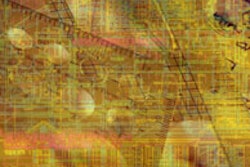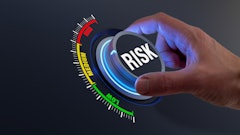Cambridge, UK — November 17, 2006 — It is well-known that the adoption of radio frequency identification (RFID) is happening around the globe. But where are the success stories, and in which market sectors? Here Teresa Henry with IDTechEx highlights the leading adopter nations, the big spenders and surprise niches for RFID implementation.
IDTechEx keeps a close eye on which countries are eagerly adopting RFID and which are not. Our sources include intensive traveling, conferences, literature searches and our IDTechEx RFID Knowledgebase of over 2,300 case studies covering more than 2,500 organizations and 85 countries. The results are rather surprising.
Firstly, the United States is the greatest adopter, with by far the largest number of cases of RFID in action and orders that are often the world's largest by value. It has even pulled ahead in the last year, with over 840 recorded projects. More surprising is the United Kingdom holding second place by number of cases, though not the money spent, where China has more claim to fame and Korea and Japan are strong rivals.
The top ten countries by number of case studies are shown below, but it did not look like this only one year ago. China and Korea have jumped up a notch, and, remarkably, Australia has jumped from number ten to number seven.
Countries leading in number of case studies in the IDTechEx RFID Knowledgebase
1. United States
2. United Kingdom
3. Japan
4. Germany
5. China
6. France
7. Australia
8. Netherlands
9. Korea
10. Canada
When we saw the unusual activity in Australia we focused research onto the region for a new report RFID in Australasia 2007-2017, and we reveal some of the results here. New Zealand is a follower, with the exception of the work of Fonterra, the world's largest milk cooperative.
What's Up Down Under?
What is going on in Australia? The rapid advance of Australia in RFID is on a broad front, from books in libraries to tagging of humans in hospitals, but one could say that about many countries. What sets Australia apart from most of its peers are aspects such as the legal requirement to tag cattle and racehorses, and the trials and rollouts of tagging fish, tomatoes and other foods by its vibrant food industry.
Australia will not stop there. It is likely to introduce legislation to tag all four-legged livestock ahead of most other countries. With the major trading blocs finding reasons to protect their food industries, external suppliers such as Australia, with the world's largest population of sheep, must be beyond suspicion. RFID is a part of that.
In the "books, libraries and archiving" sector, Australia is doing more than its size would indicate. The same is true of the "financial, security, safety" sector, which exhibits considerable innovation. For example, we have RFID being used to track police vehicles, criminals in correctional facilities, pedophiles and even forensic samples. That breadth of approach is not seen elsewhere.
RFID also is used in passports and payment cards and many mass transport card schemes in Australia. One interesting result is that, although Australia mimics the world as a whole in having HF read-write passive RFID dominate its markets, low frequency use comes next, not (as so often elsewhere) UHF. LF tags are used on marathon runners' shoes and bicycles in other races, on a wide variety of animals and on conveyances in Australia.
A contrast to Australia is given by another country of similar population and economic size, the Netherlands, which also is unusually active in applying RFID. Primarily, this is based on use of RFID cards and other RFID applications in the leisure sector, such as in football matches. The "financial, security, safety" and the "logistics and postal" sectors are also big users of RFID in the Netherlands, with item level tagging by RFID labels an important way of applying RFID there.
One thing is common to Australia and the Netherlands: both use high frequency (HF) far more than any other frequency for their RFID. That is also true of the world as a whole.
IDTechEx keeps a close eye on which countries are eagerly adopting RFID and which are not. Our sources include intensive traveling, conferences, literature searches and our IDTechEx RFID Knowledgebase of over 2,300 case studies covering more than 2,500 organizations and 85 countries. The results are rather surprising.
Firstly, the United States is the greatest adopter, with by far the largest number of cases of RFID in action and orders that are often the world's largest by value. It has even pulled ahead in the last year, with over 840 recorded projects. More surprising is the United Kingdom holding second place by number of cases, though not the money spent, where China has more claim to fame and Korea and Japan are strong rivals.
The top ten countries by number of case studies are shown below, but it did not look like this only one year ago. China and Korea have jumped up a notch, and, remarkably, Australia has jumped from number ten to number seven.
Countries leading in number of case studies in the IDTechEx RFID Knowledgebase
1. United States
2. United Kingdom
3. Japan
4. Germany
5. China
6. France
7. Australia
8. Netherlands
9. Korea
10. Canada
When we saw the unusual activity in Australia we focused research onto the region for a new report RFID in Australasia 2007-2017, and we reveal some of the results here. New Zealand is a follower, with the exception of the work of Fonterra, the world's largest milk cooperative.
What's Up Down Under?
What is going on in Australia? The rapid advance of Australia in RFID is on a broad front, from books in libraries to tagging of humans in hospitals, but one could say that about many countries. What sets Australia apart from most of its peers are aspects such as the legal requirement to tag cattle and racehorses, and the trials and rollouts of tagging fish, tomatoes and other foods by its vibrant food industry.
Australia will not stop there. It is likely to introduce legislation to tag all four-legged livestock ahead of most other countries. With the major trading blocs finding reasons to protect their food industries, external suppliers such as Australia, with the world's largest population of sheep, must be beyond suspicion. RFID is a part of that.
In the "books, libraries and archiving" sector, Australia is doing more than its size would indicate. The same is true of the "financial, security, safety" sector, which exhibits considerable innovation. For example, we have RFID being used to track police vehicles, criminals in correctional facilities, pedophiles and even forensic samples. That breadth of approach is not seen elsewhere.
RFID also is used in passports and payment cards and many mass transport card schemes in Australia. One interesting result is that, although Australia mimics the world as a whole in having HF read-write passive RFID dominate its markets, low frequency use comes next, not (as so often elsewhere) UHF. LF tags are used on marathon runners' shoes and bicycles in other races, on a wide variety of animals and on conveyances in Australia.
A contrast to Australia is given by another country of similar population and economic size, the Netherlands, which also is unusually active in applying RFID. Primarily, this is based on use of RFID cards and other RFID applications in the leisure sector, such as in football matches. The "financial, security, safety" and the "logistics and postal" sectors are also big users of RFID in the Netherlands, with item level tagging by RFID labels an important way of applying RFID there.
One thing is common to Australia and the Netherlands: both use high frequency (HF) far more than any other frequency for their RFID. That is also true of the world as a whole.


















